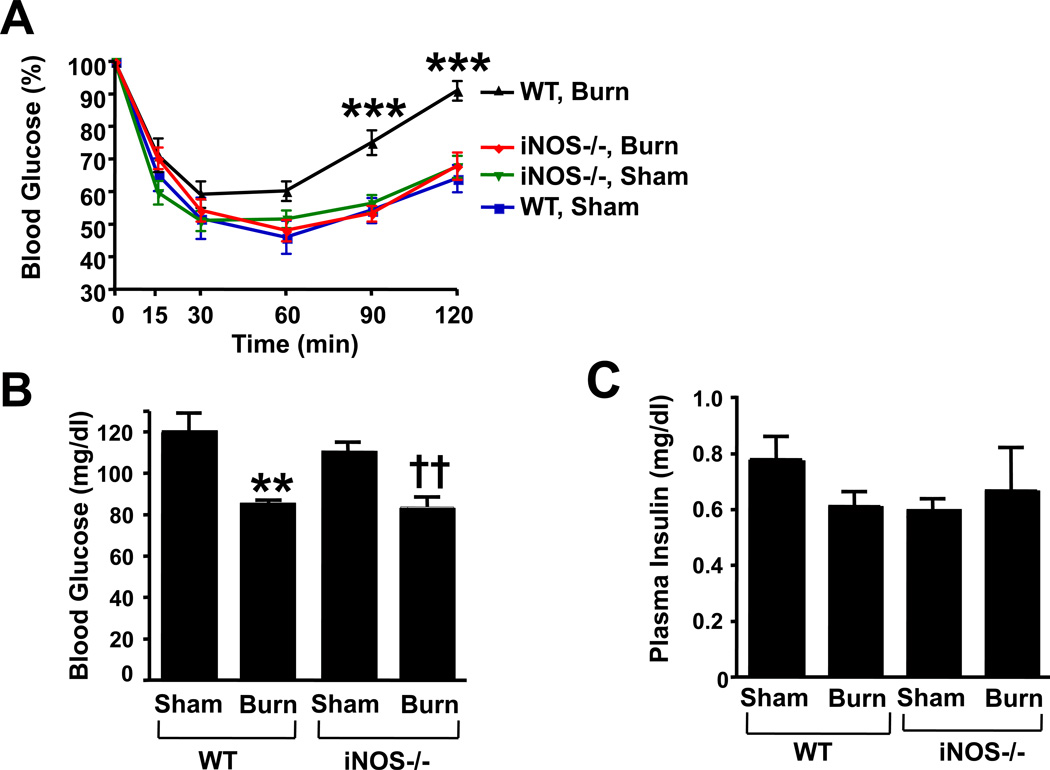Fig. 5.
iNOS deficiency improved whole-body insulin resistance in burned mice, but did not alter decreased blood glucose levels after burn injury. A, Insulin tolerance test revealed that hypoglycemic response to insulin injection was significantly blunted in burned wild-type (WT) compared to sham animals. Gene disruption of iNOS (−/−) restored sensitivity to insulin-stimulated decrease in blood glucose levels in burned mice. The overall interactions between genotype and burn/sham at 90 and 120 min after the insulin injection are statistically significant (P<0.005). ***P<0.001 vs sham-burned WT and sham-burned and burned iNOS−/−. n=8 per group. B, Unexpectedly, burn injury resulted in decreased blood glucose levels both in wild-type and iNOS-deficient mice. iNOS deficiency did not alter blood glucose levels either in sham-burned mice or in burned mice. **P<0.01 vs sham-burned WT, ††P<0.01 vs sham-burned iNOS−/−. n=8 per group. C, Neither burn injury nor iNOS deficiency significantly affected plasma insulin concentrations.

